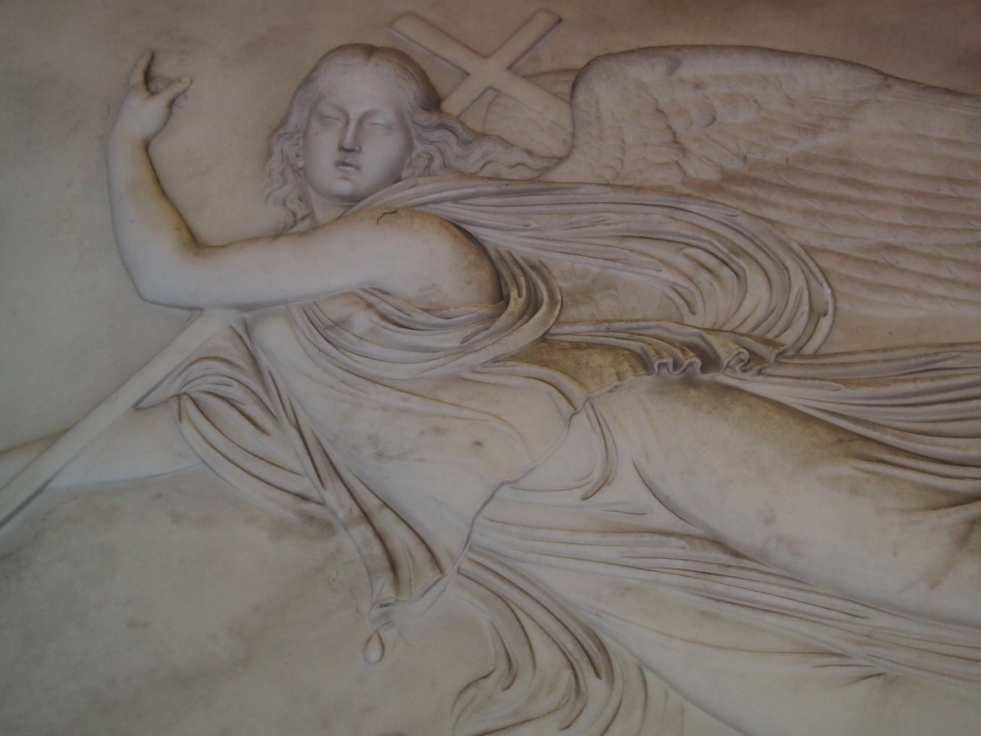London is home to a number of ruined churches – in the City of London alone there are several, victims of the bombing raids of the Luftwaffe in the Second World War. However, not all of the ruined churches of Greater London are victims of the Blitz. In Stanmore, a comfortable suburb at the top of the Jubilee Line, another ruined church can be found alongside its Victorian successor. The current parish church of St John the Evangelist was built in the mid-19th Century, but the picturesque ruins of the 17th Century church it replaced still survive in the church’s large burial ground.
The burial ground is a tranquil place, despite being close to a busy main road. Numerous squirrels darted in and out of the gravestones and a pair of magpies strutted around, while pigeons cooed softly, hidden from sight. It was a humid September day when I visited, with shafts of sunlight shining through the clouds. For an hour or so I had the place to myself, before the ruin was opened for the afternoon.

Continue reading “The ruin next door: exploring the Brick Church of St John the Evangelist, Stanmore” →















